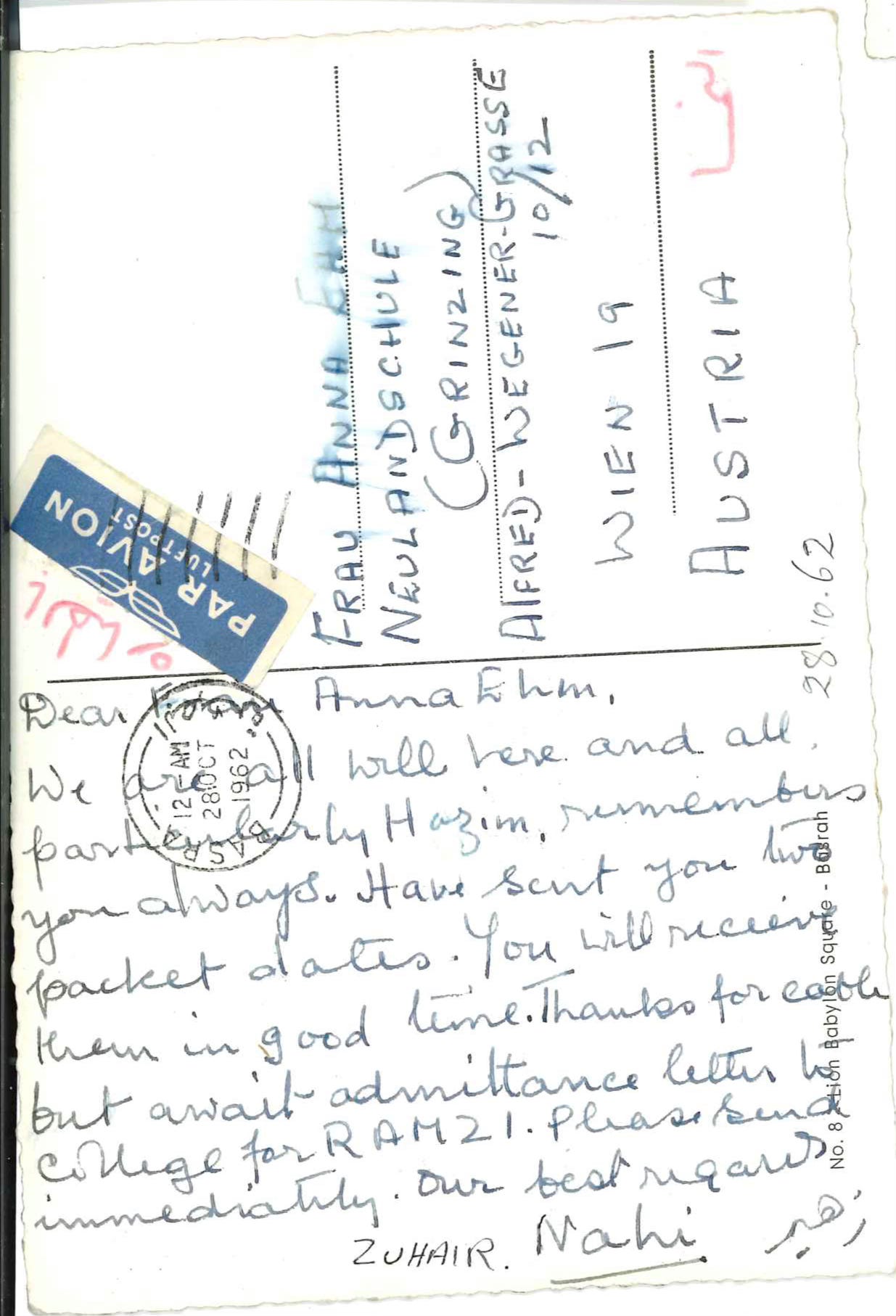Iraq Before Ba'ath Rule
A few sights, marvels, and, of course, vintage postcards from before 1963
The history of Iraq—ancient Mesopotamia, by and large—is a particularly tragic one, especially after the Second World War. Here’s a bit of background from Wikipedia (references omitted):
In Iraq, the Iraqi Regional Branch had supported Abd al-Karim Qasim’s seizure of power and its ensuing abolishment of the Iraqi Monarchy. The Iraqi Ba’athists supported Qasim on the grounds that they believed he would enter Iraq into the UAR [United Arab Republic], enlarging the Arab nationalist republic. However, this was proven to be a ruse, and after taking power, Qasim launched an Iraq first policy. In retaliation, the Ba'ath Party tried to assassinate Qasim in February 1959, but the operation, involving a young Saddam Hussein, failed. Qasim was overthrown in the Ramadan Revolution led by young Ba’athist officer Ahmed Hassan al-Bakr; long suspected to be supported by the American (CIA), however pertinent contemporary documents relating to the CIA’s operations in Iraq have remained classified by the U.S. government, although the Iraqi Ba’athists are documented to have maintained supportive relationships with U.S. officials before, during, and after the coup. The Iraqi Regional Branch, when it took power, was so riven by factionalism that its purported allies launched a counter-coup forcing them out of power in November 1963.
That said, here’s a few vintage postcards from Iraq before the Ba’ath Party took over.
The above postcard was mailed in 1955, with the below one, well, it was sent in 1960 by an Iraqi to the Neulandschule’s then-director, Anna Ehm. That school, incidentally, was also the one Erich Sontag attended in the 1930s (and where my grand-aunt worked), hence I’m perfectly able to explain their appearance in the collection. That said, however, I don’t know about what brought Anna Ehm, headmistress of a Catholic private school in Vienna, and the writer(s), Zuahir and Nahi, whose concern (for a fellow Iraqi?) attending the Neulandschule is palpable:
On its reverse, we learn that it’s a Lion in Babylon Square in Basrah in southern Iraq; go ahead and click on that link, it’s some 3,500 years “old” and has its own Wikipedia entry.
Note the theme of “two packet [sic] dates…for Ramzi”, a young—presumably Catholic or Oriental Christian—boy from Iraq who applied to attend college, perhaps the Neulandschule.
Sent in 1960, as revealed by the reverse of the above postcard from Baghdad, it was apparently hard to get good dates in Vienna, Austria, back in those days.
In the end, I’ll have to ask my aunt who worked at the same institution, the Neulandschule, who perhaps knows “more” about Anna Ehm’s ties to these Iraqis.
For now, however, I’ll leave you with these vintage postcards from Iraq before 1963. I do have some in colour, which I’ll post tomorrow.









This is excellent, thank you. Lots of Assyrian Aramaic-speaking Christians in Australia. Iraq is definitely on my bucket list but I will probably never be able to visit. Thank you for allowing me to travel there from my home.
Fascinating.
Interesting that the post cards are in English. I guess English floated in to the Middle East through the British Empire - not German. Curious what the motivation was to teach English language skills in European cities and when that began. Was it the effect of the British Empire? The USA was a far away land, of little consequence until WWII and The Cold War.